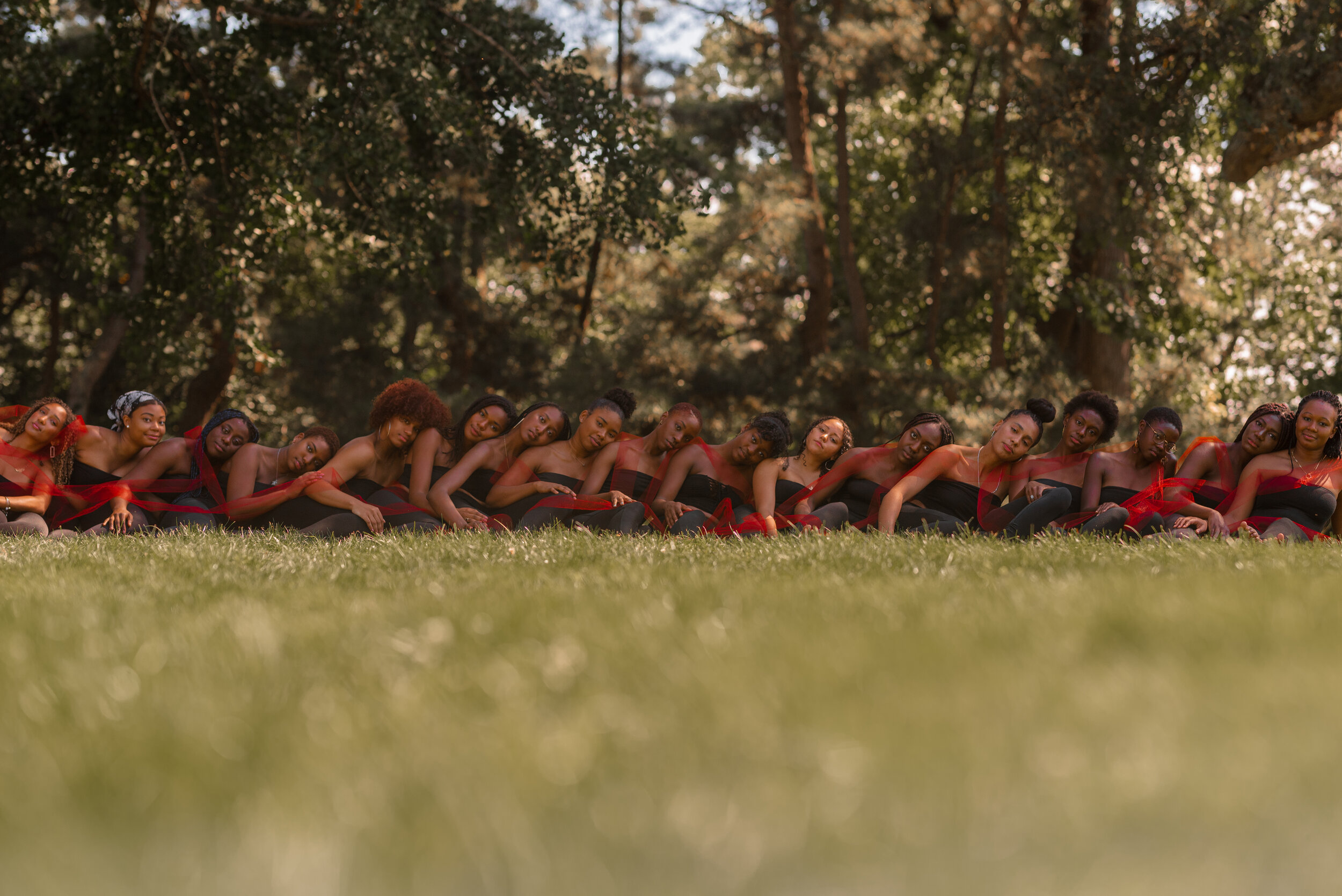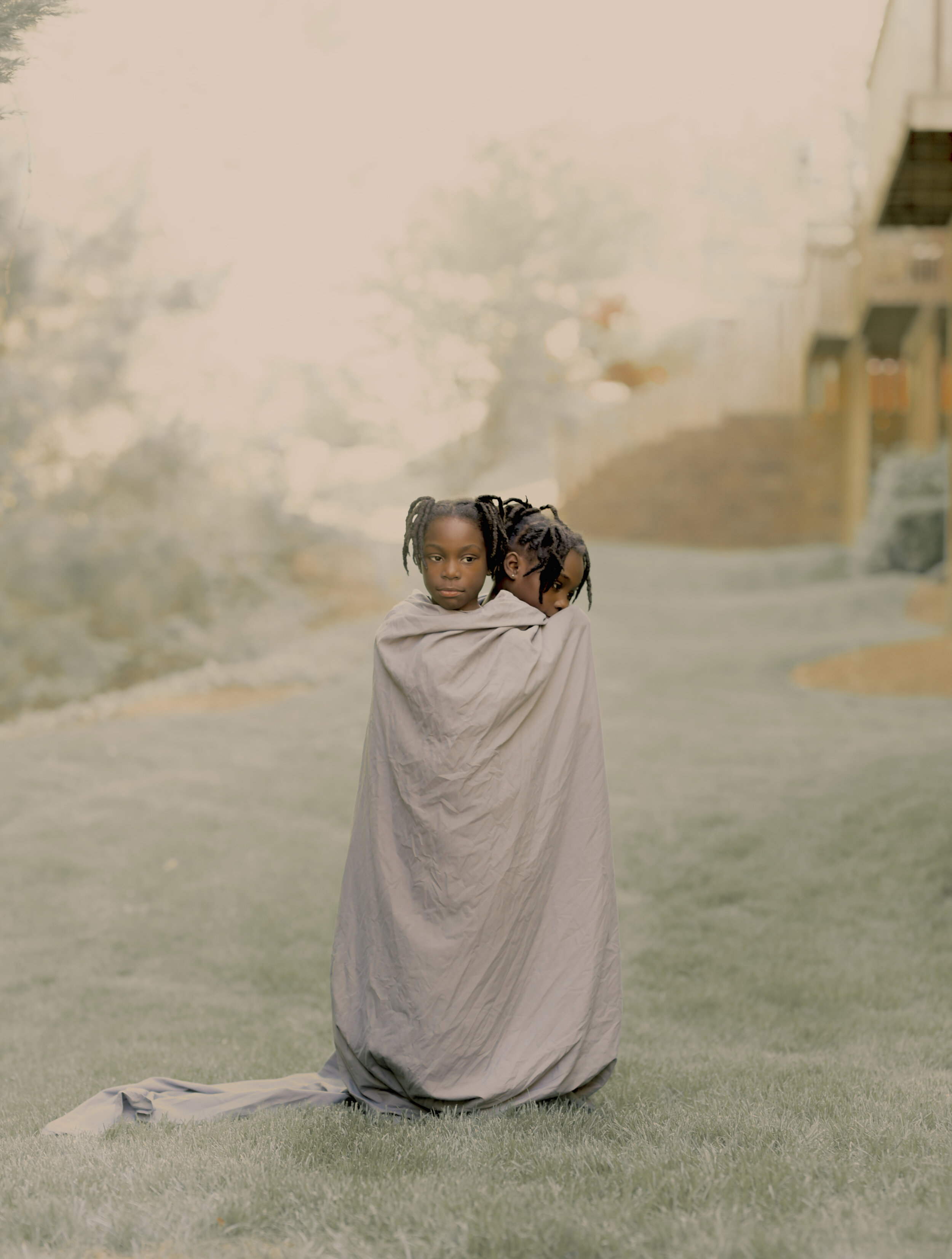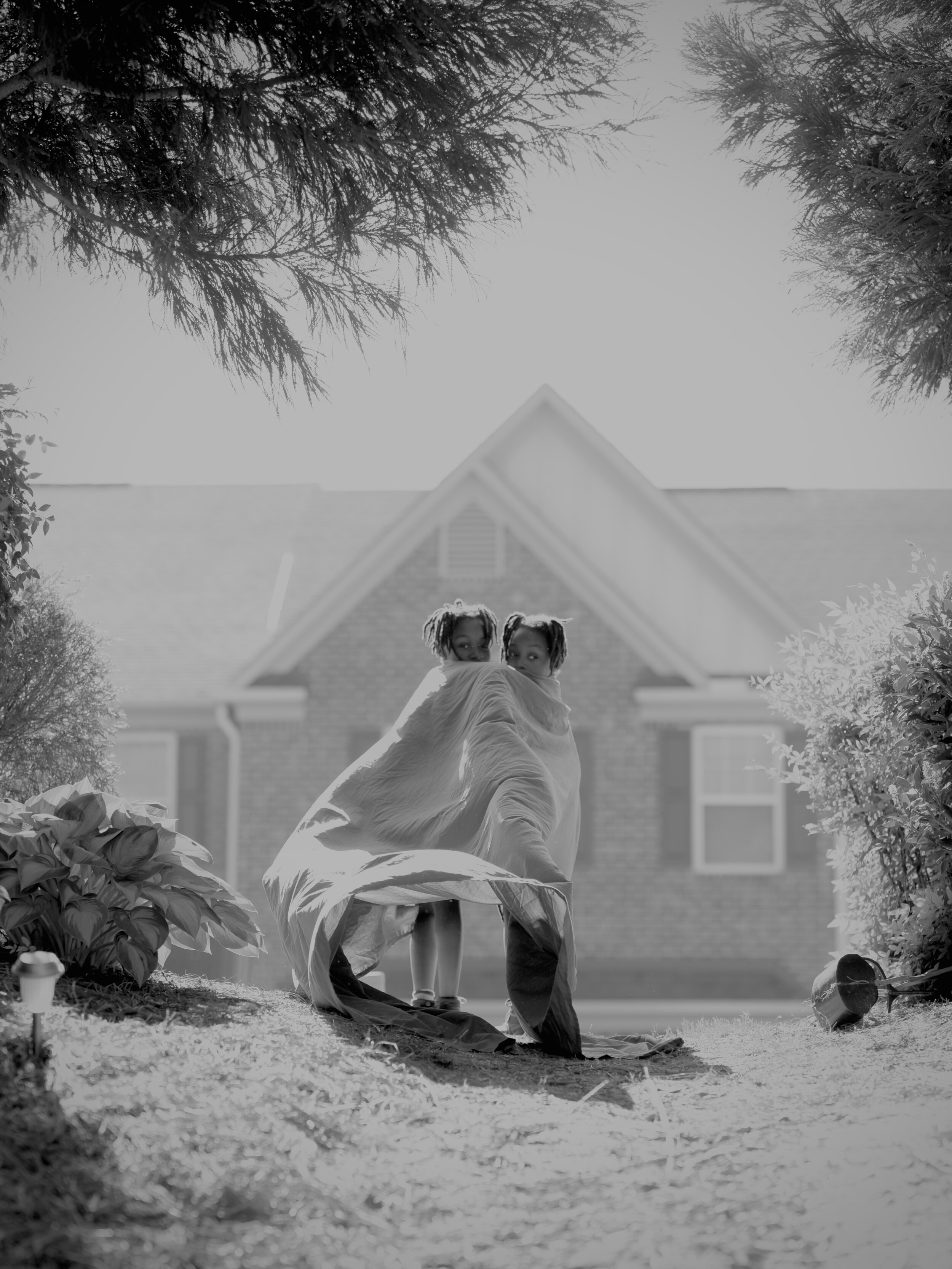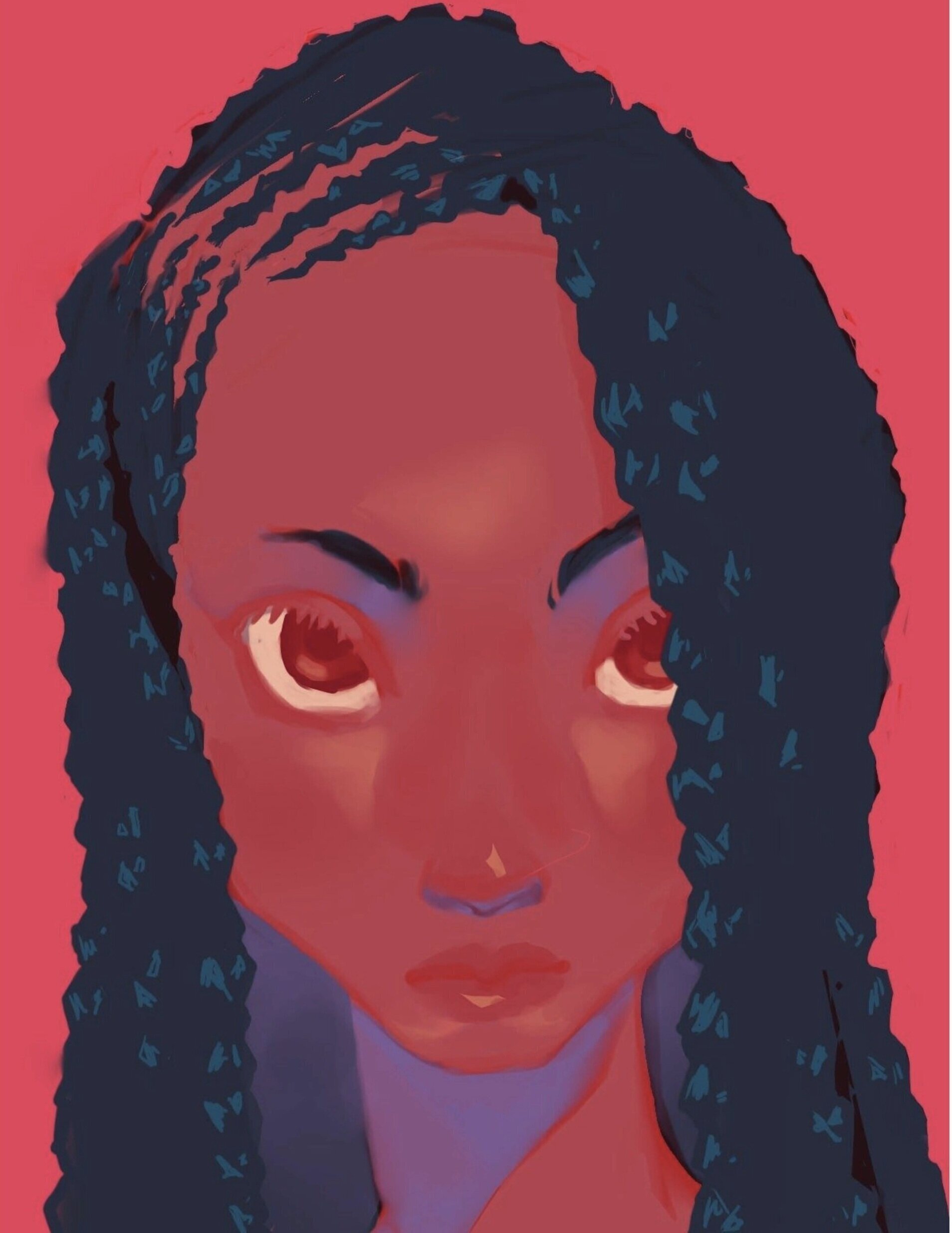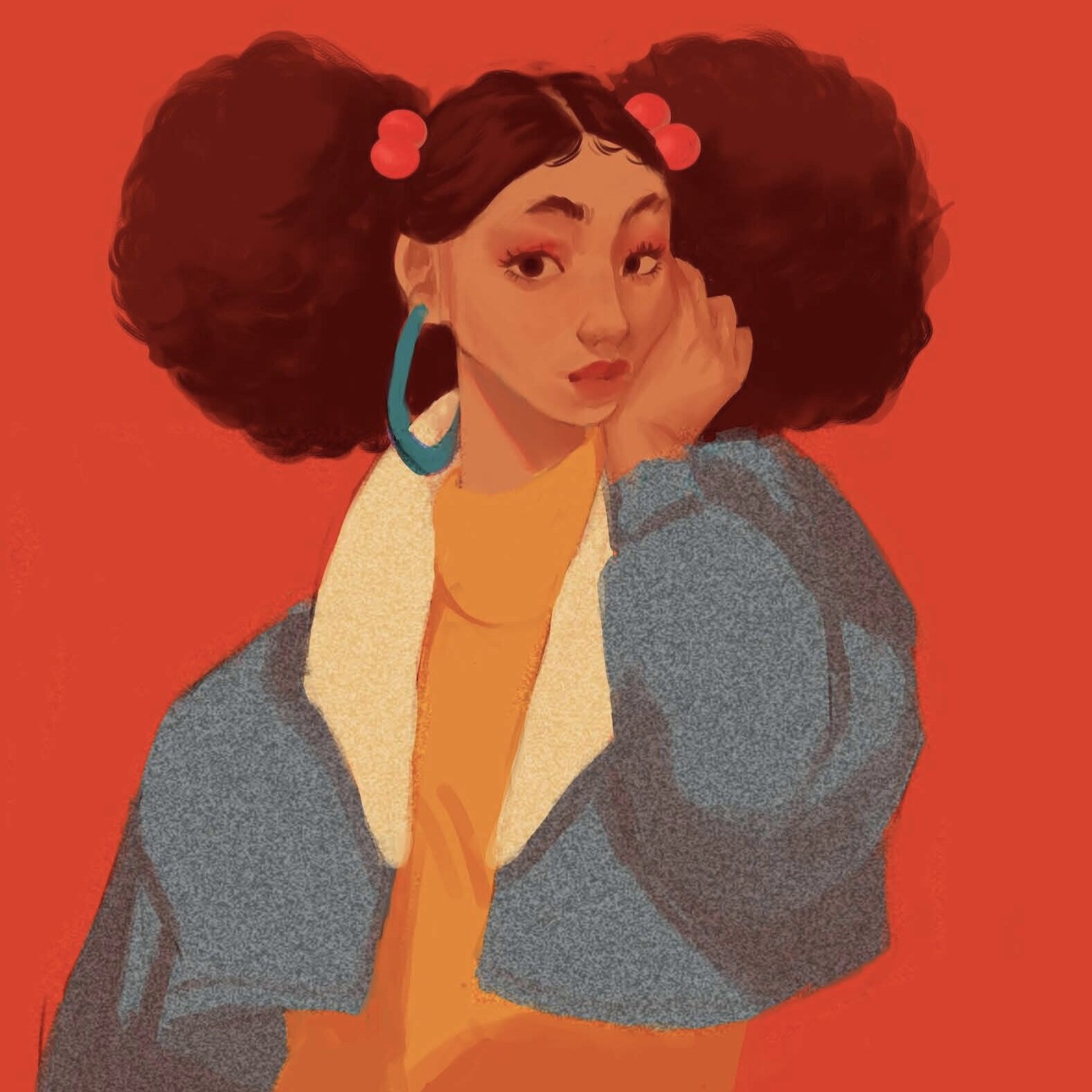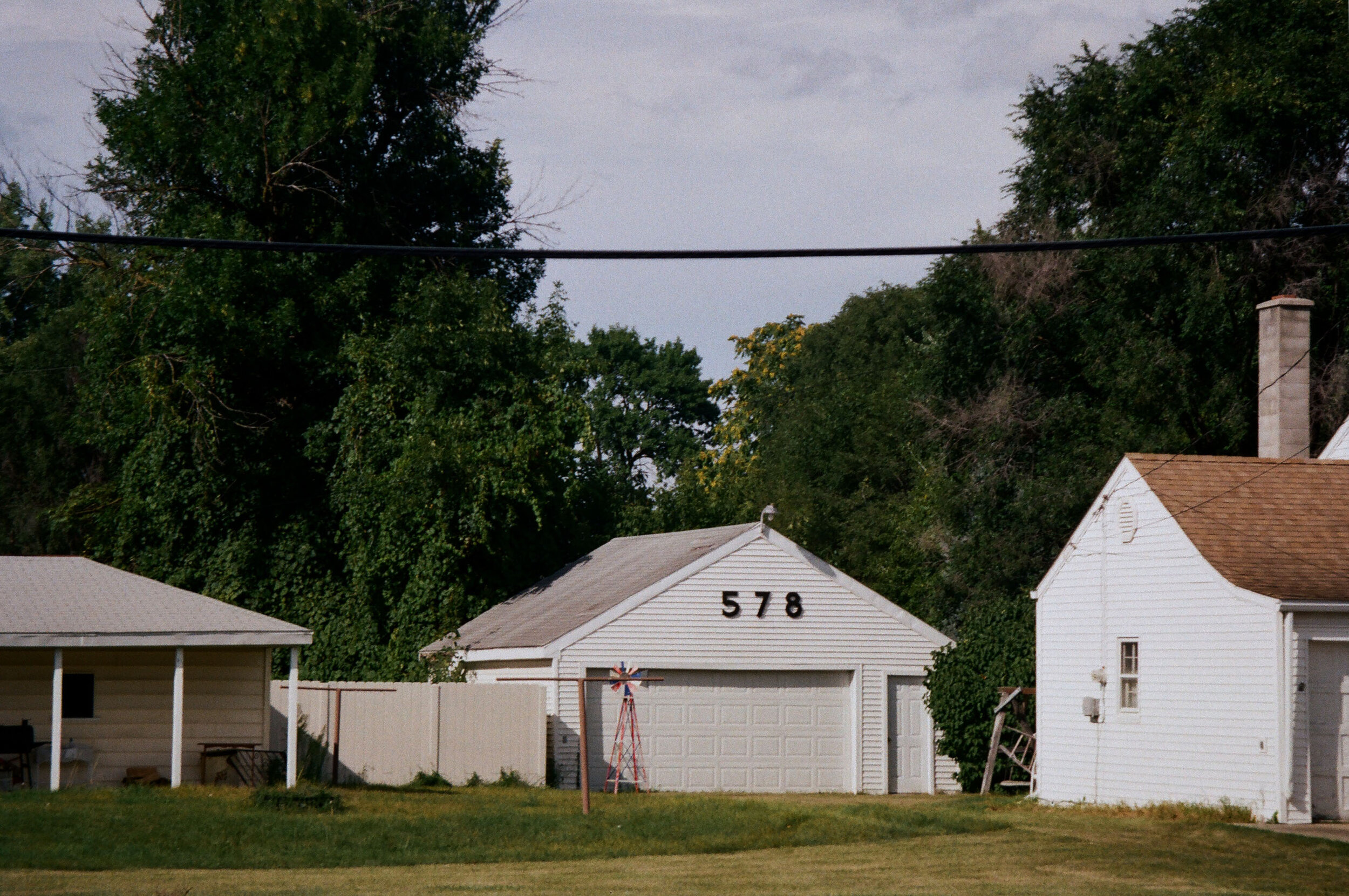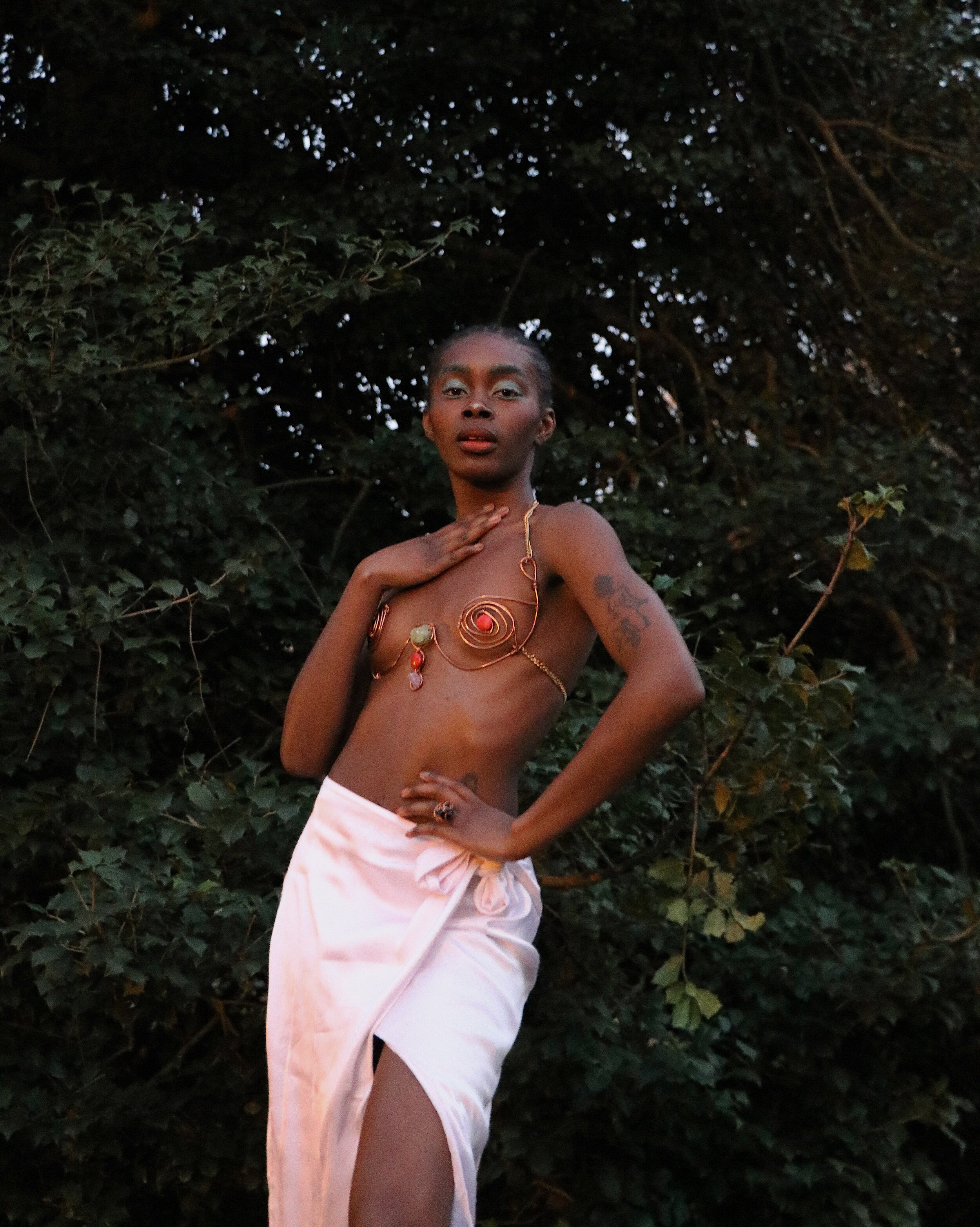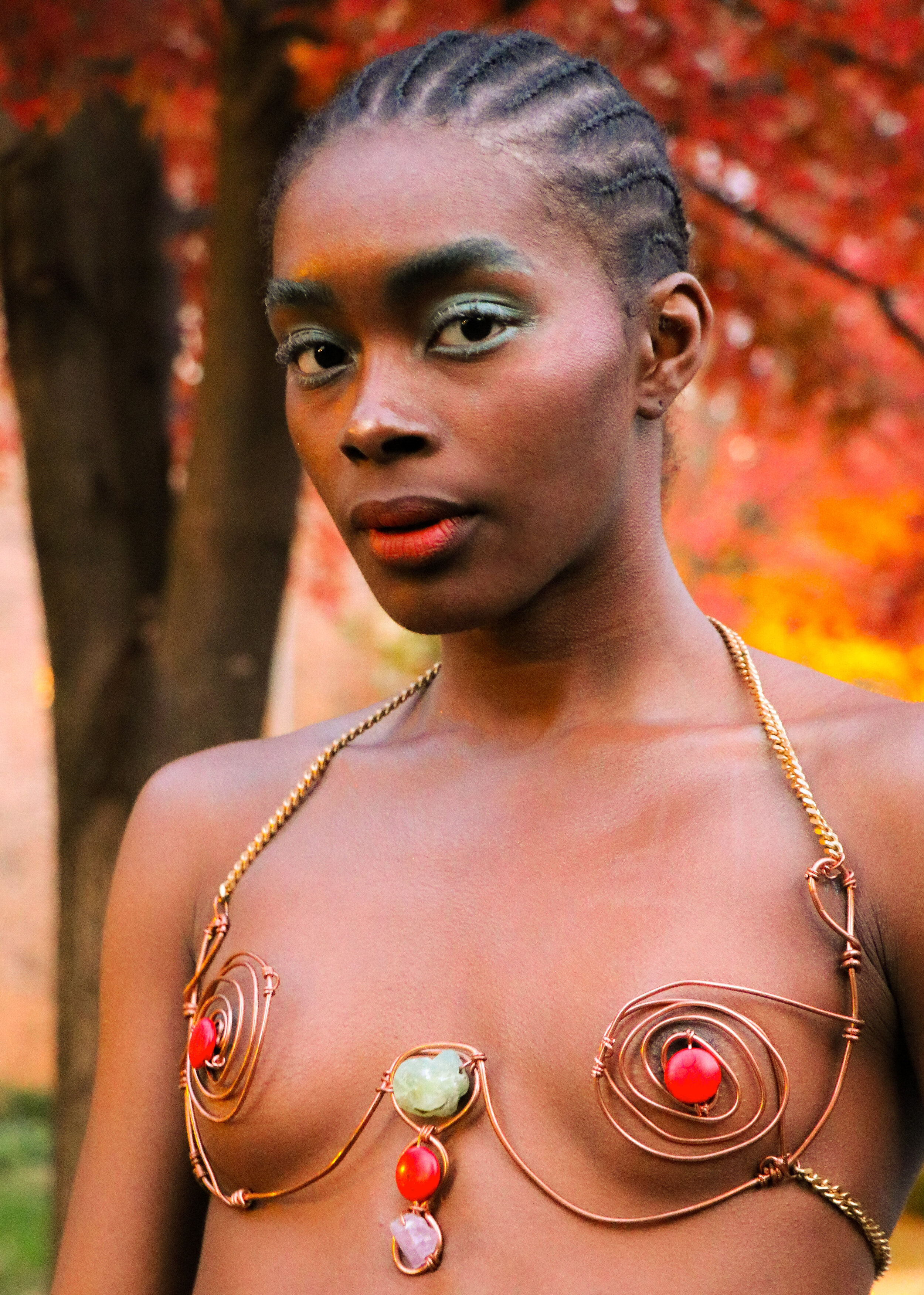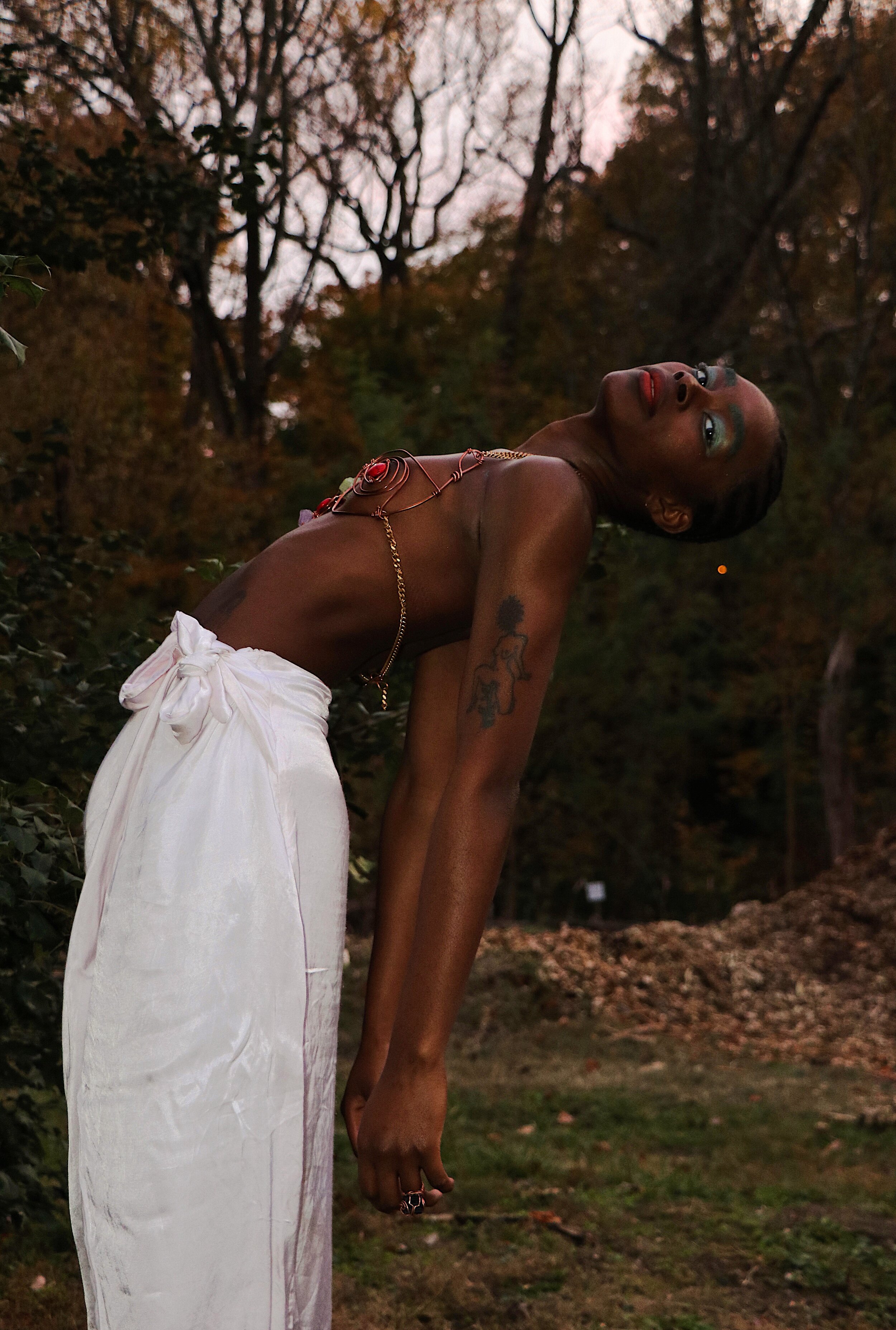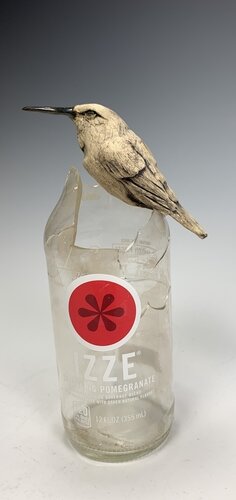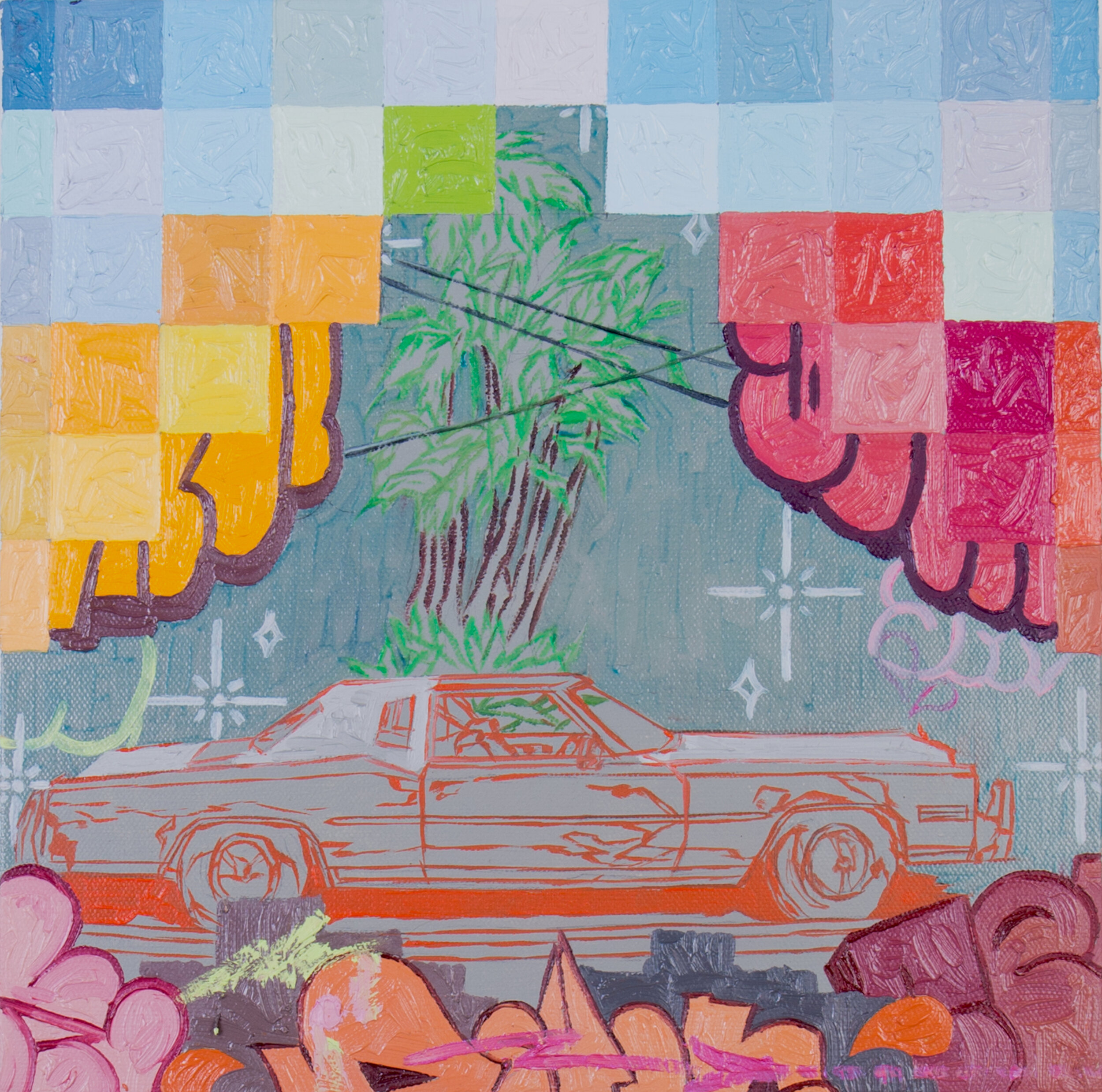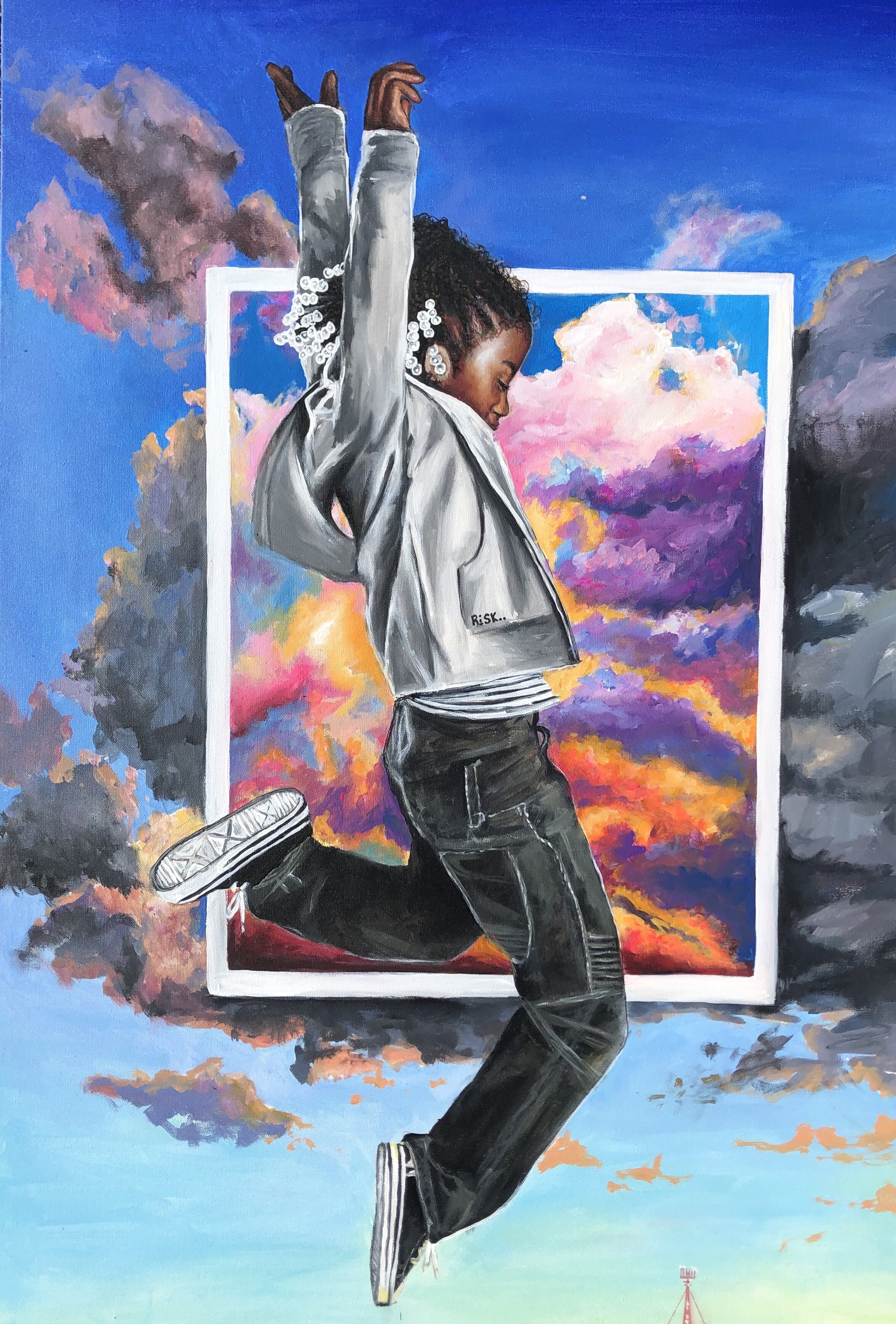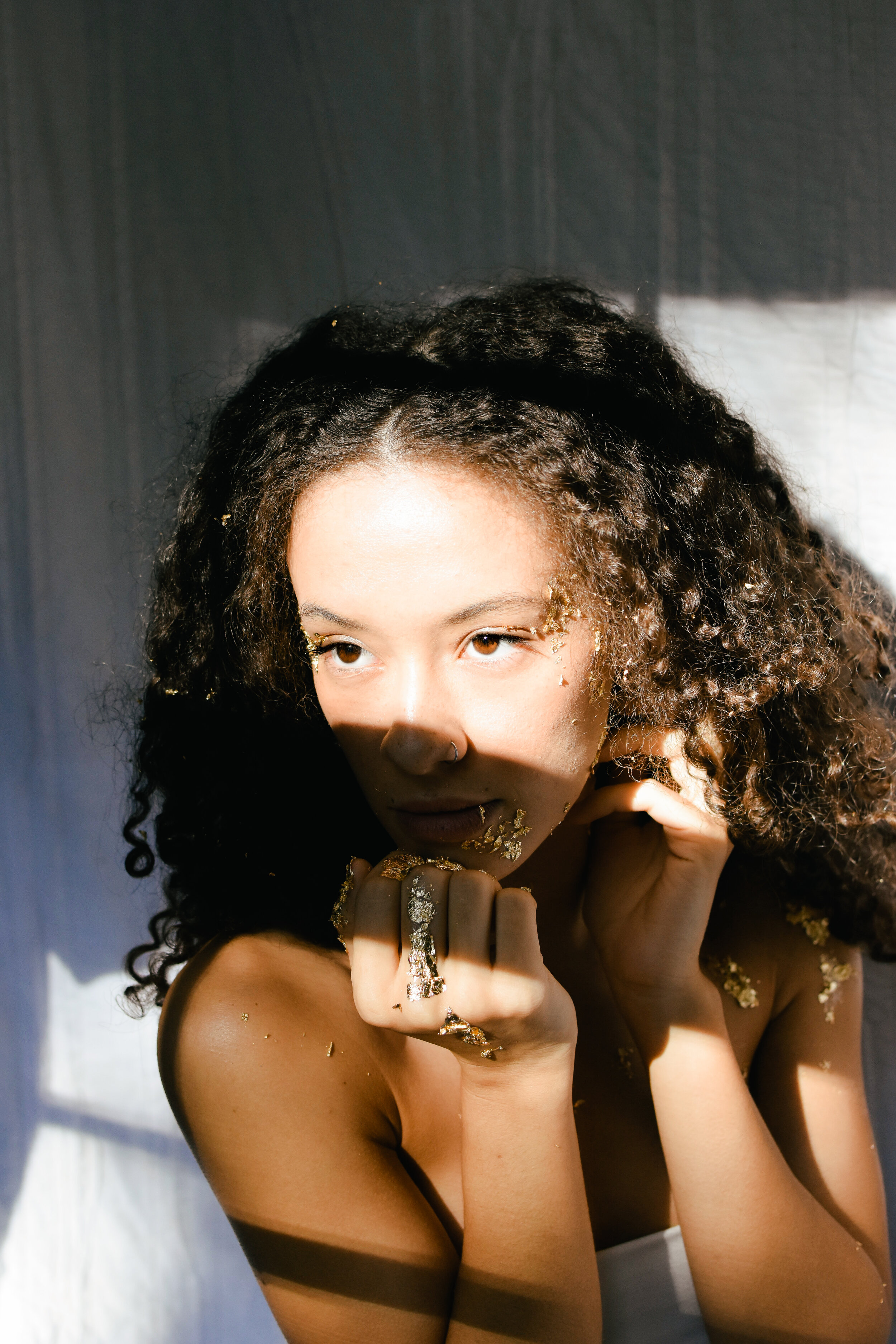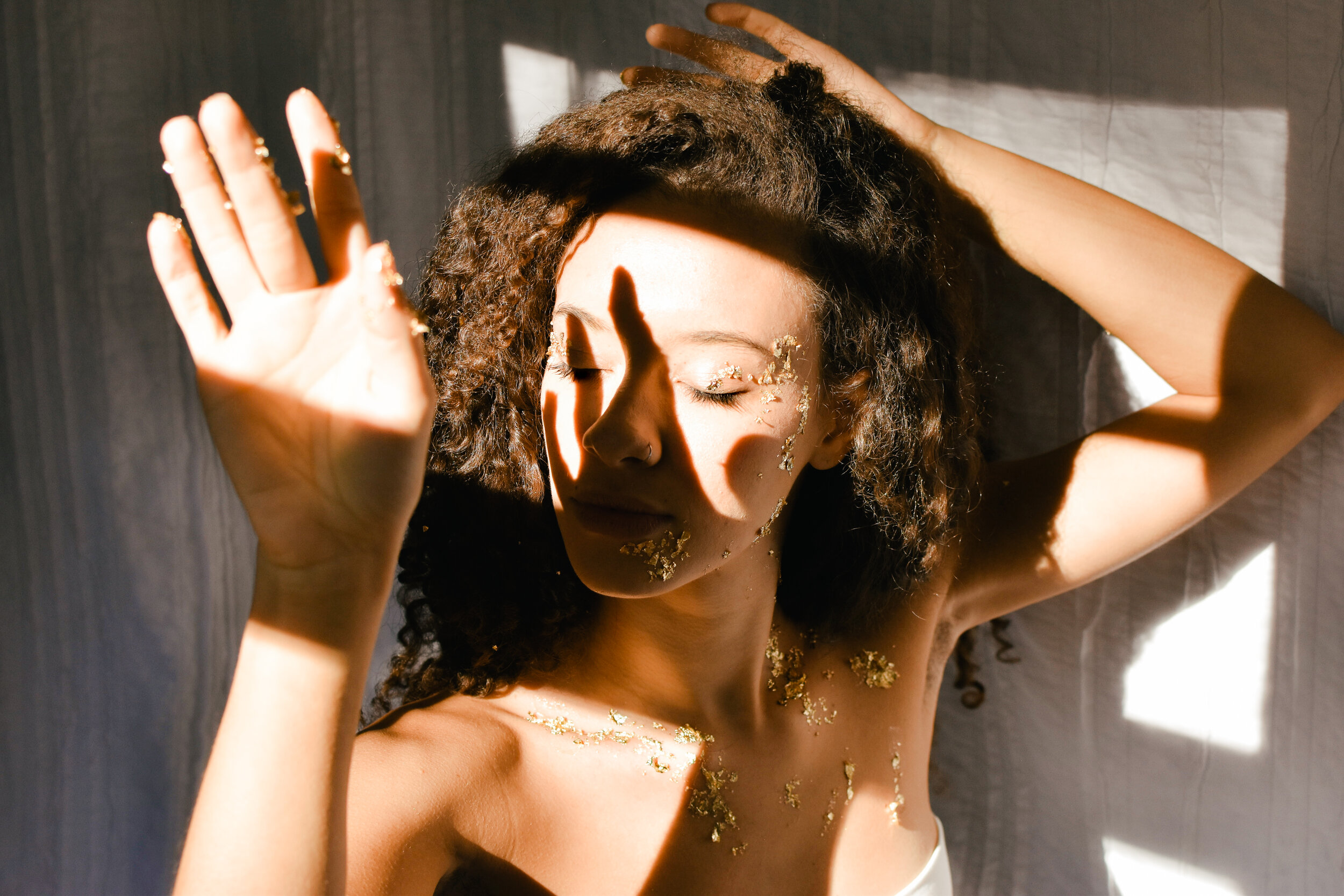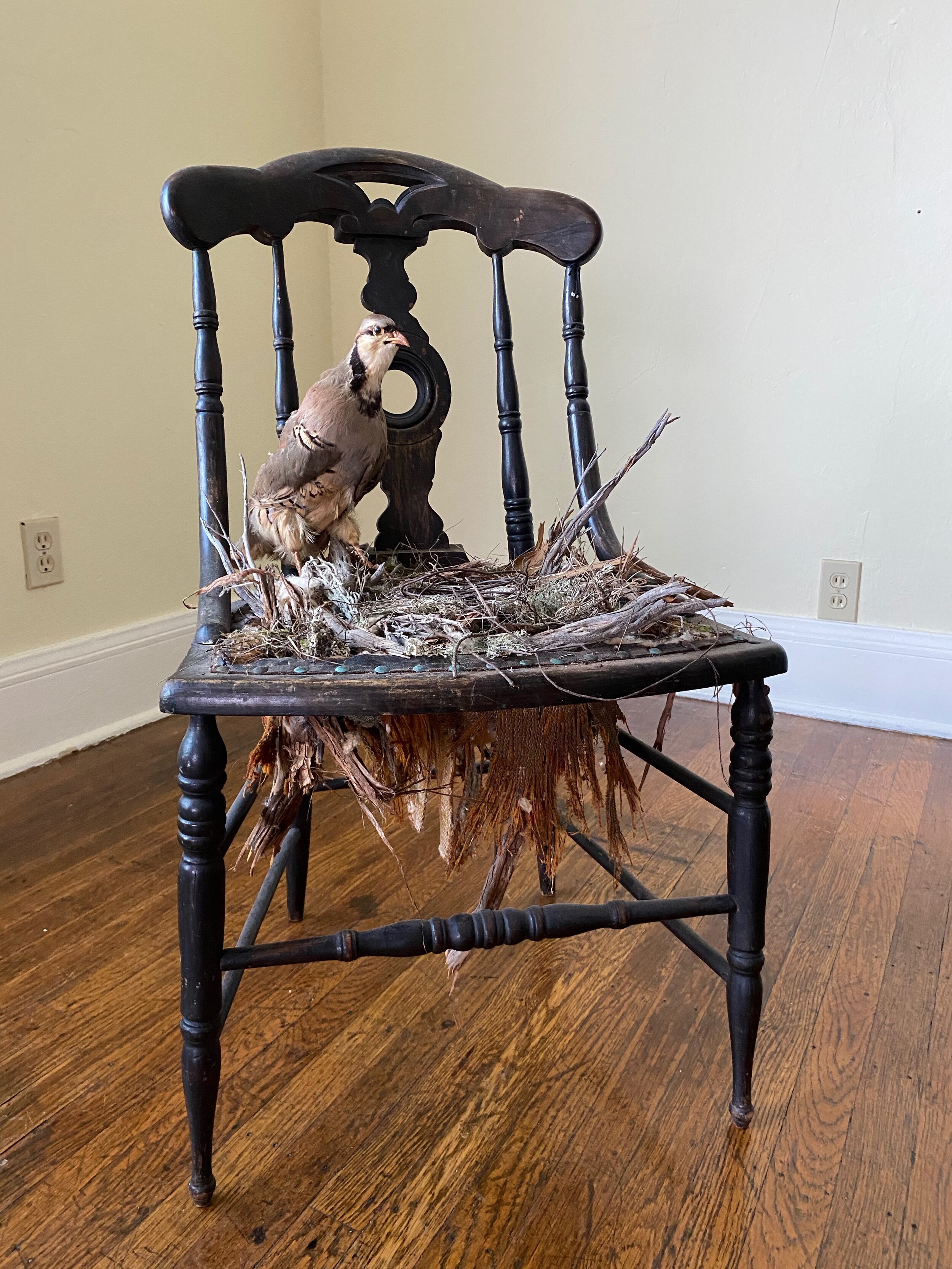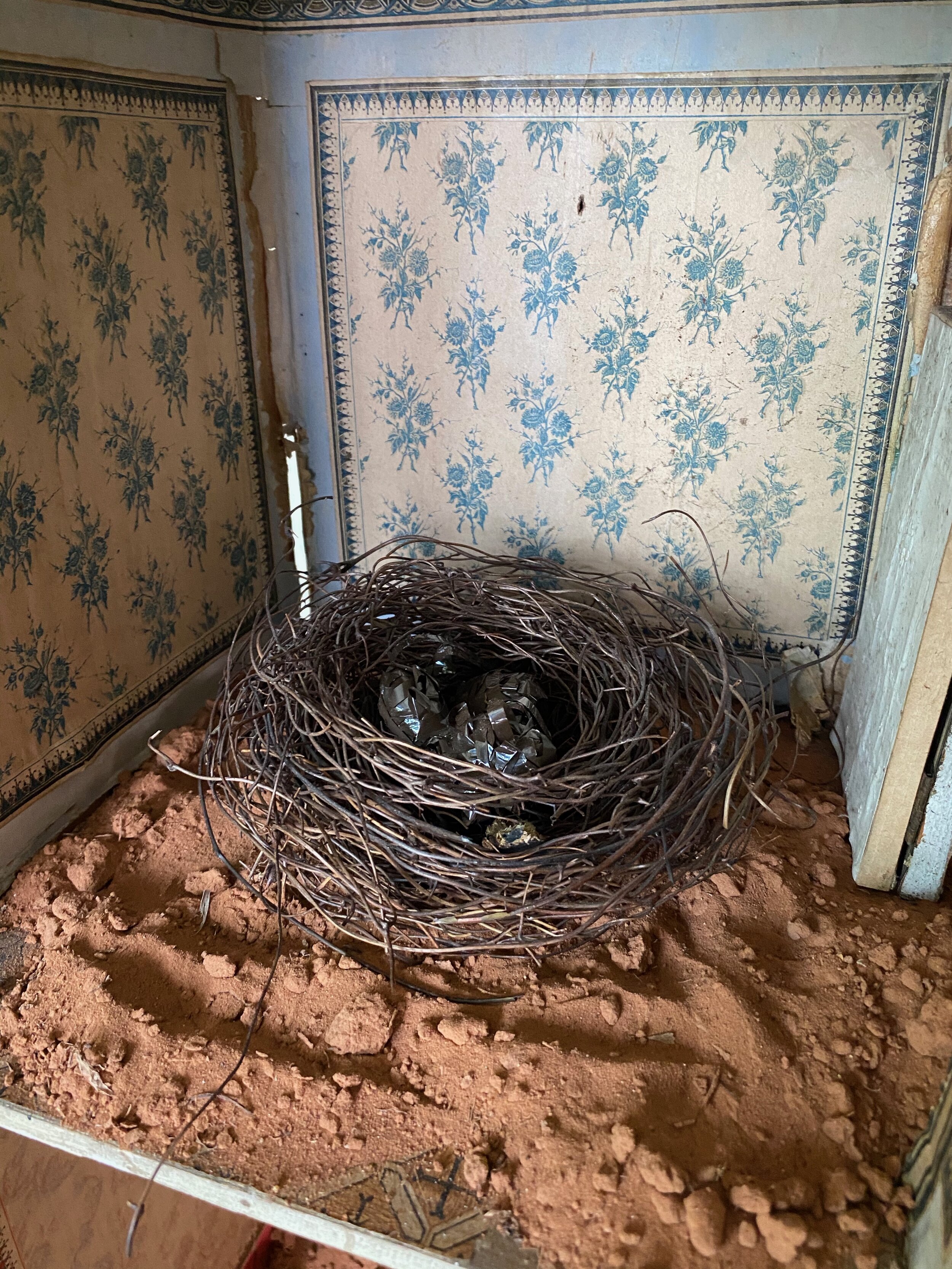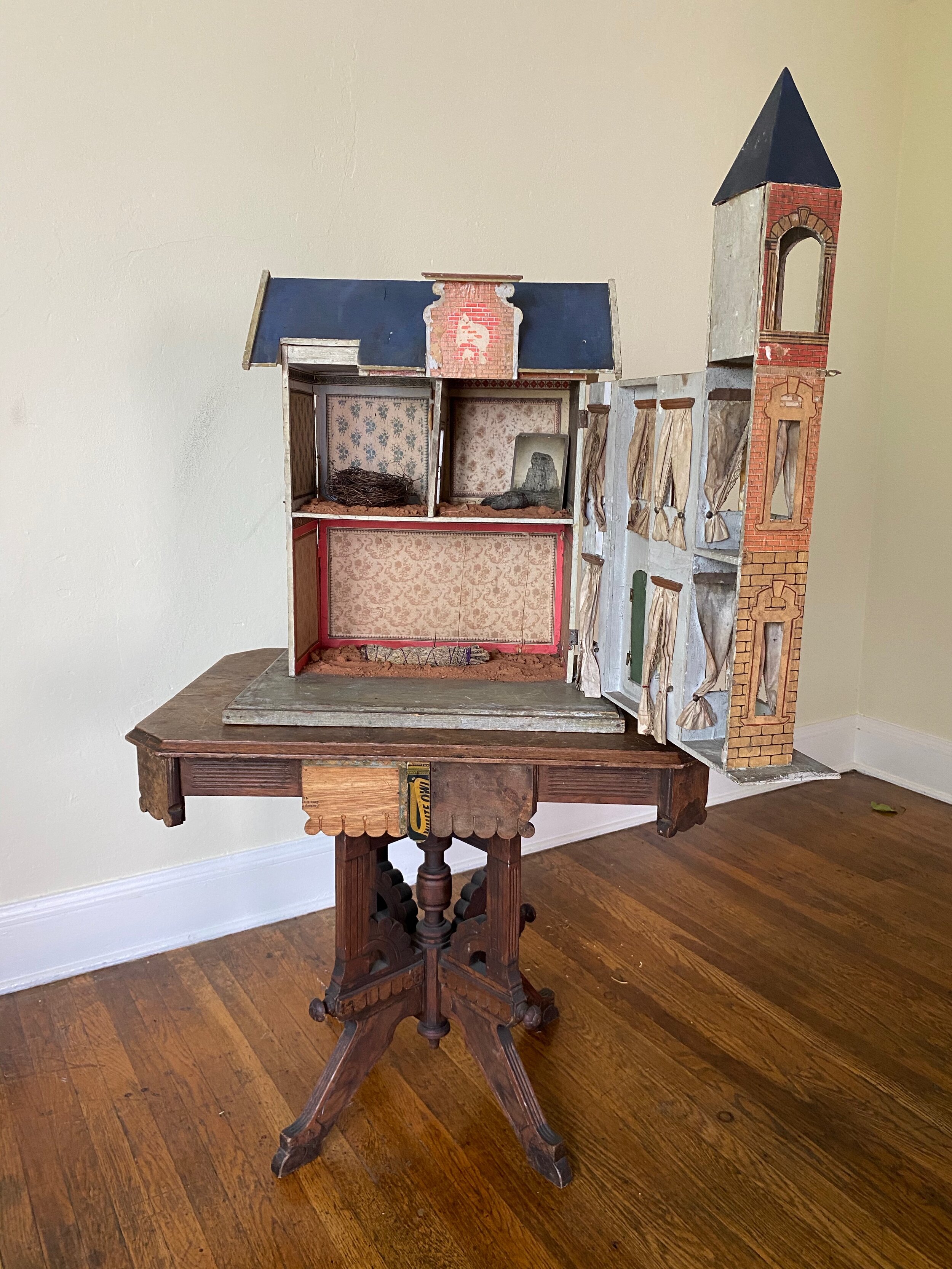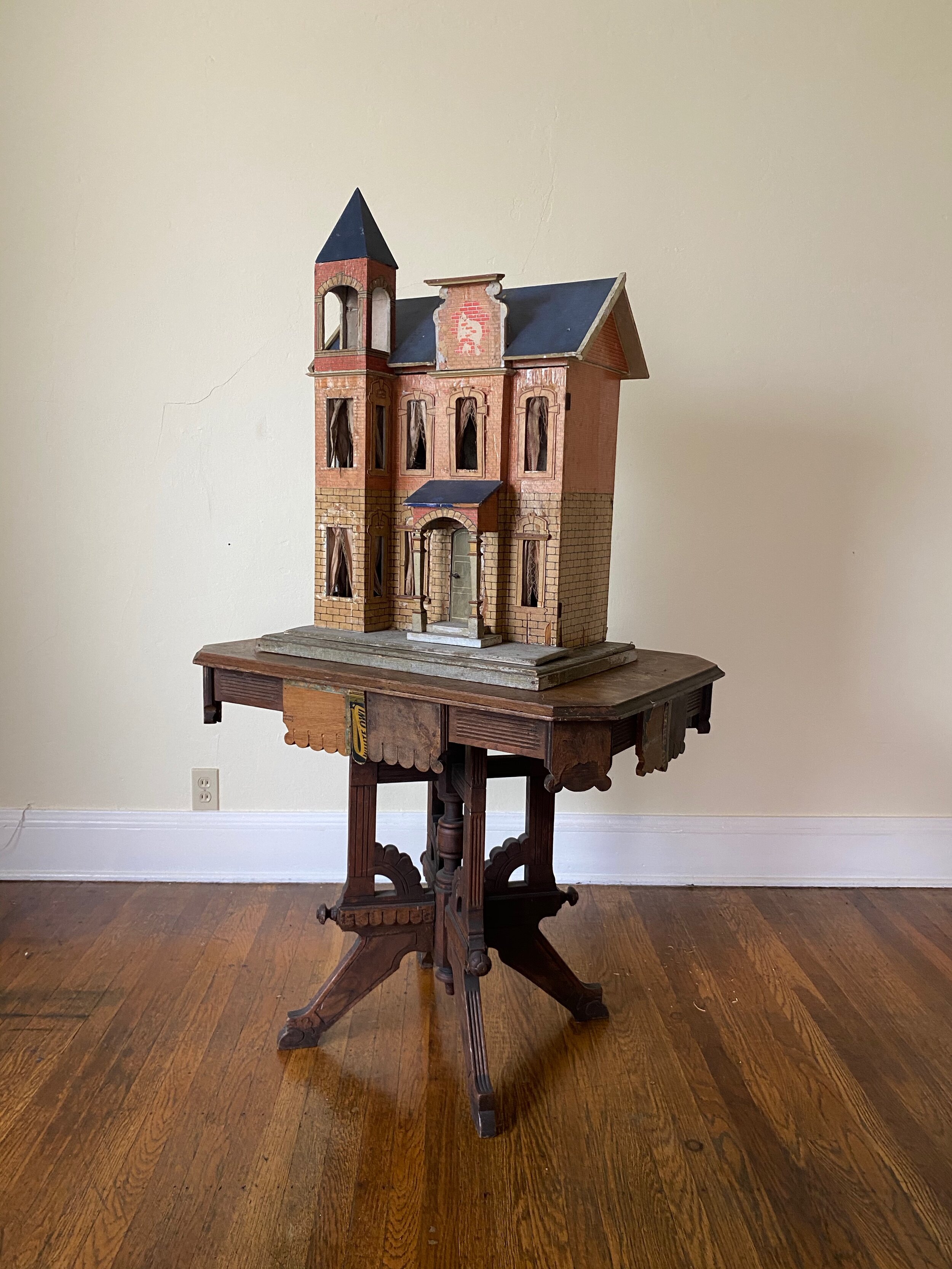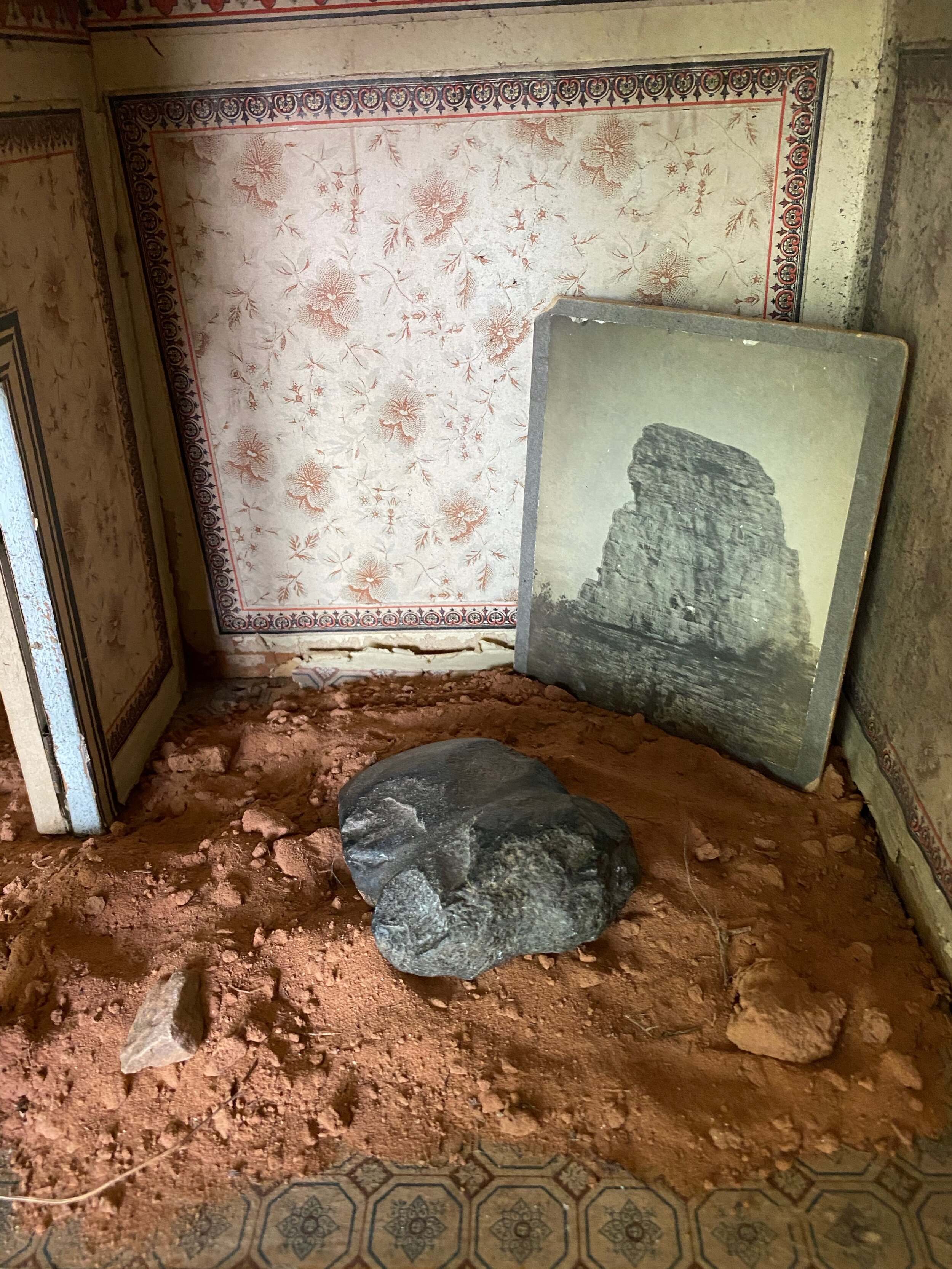The visual
The Visual is a platform for art and photography created by womxn and femmes of color to assert their presence and control their own representation. Each piece demands attention and tells a story about the artist behind it.
Sydney Holmes is a photographer from Atlanta, GA, now based in New Haven, CT. For more of her work, click here.
“Yinth is a charcoal drawing on paper of a photo I took of my two non-binary friends while we were walking in a neighborhood park. All the figures display an assertive stance that begs the viewer to inquire a little closer.” — Tara Gruchalski
“NOIRiginals is a wearable art campaign created to pay homage to the influence of Black art and innovation on media and popular culture. Fashion can be an essential element in cementing our legacies and archiving our lived experiences and histories.” — Mariah Jewel
“Green Oneness. Honestly, life has moments that can get too much to bare, but I do find myself in the arms of a primordial mother.” — Kourtnie Rodney Brown
“[This piece] symbolizes the importance of connection and unity. The rock that protects the tree envisions a sacred and safe future.” — Kavonna Smith
By Janae Grass, from left to right: "A Blanket to Keep Her Warm" depicts the front of a ribbonwork blanket worn by Indigenous women in the Great Lakes area. The shades of red represent the ongoing Missing and Murdered Indigenous Women epidemic, in this sense the blanket is used for warmth and comfort to all those affected.
"To Thâkînâwe | To Sauk Country" depicts a Sac and Fox woman's applique skirt. The inspiration behind this piece was the stories of how the woman were able to continue these techniques and designs despite the forceful removal from the Great Lakes area to Oklahoma.
"Môshwêhi" depicts the back of a woman's shawl made from valuable trade cloth. These shawls were meant for special occasions and were often used to showcase the skills of ribbonwork.
Ifunanya Eke is a Black & Blooming semifinalist and Nigerian-born, Texas-based visual artist and high school junior.
Kayleigh “Kale” Serrato Doyen (she/her/hers) is a curator and analog photographer completing her BA in Art History in Chicago. Born and raised in a Xicanx family in Saginaw, Michigan, Kale is interested in how diaspora and late-stage capitalism impact the experience of people of color living in the United States. Kale uses photography to document the changing landscape of rural Michigan, as small towns and low-income families grapple with the disparaging effects corporate America has on local economies, politics, and gentrification.
Ma’at Sargeant: “Rule of the Ethereal highlights Black women’s spirituality and magic in nature. This photo-series was created through the talent of 5 Black women: @bluntgyall (photographer), @_moedusa (model), @yeneece (creative director), @jayda.aliyah (mua), @uniquelywiredm (bra creator).” Ma’at (she/her/hers) is a creative 22-year-old Black photographer and publicist originally from St. Thomas, USVI. Both personally and professionally, she prioritizes the celebration and preservation of underrepresented cultures and communities. She moves with intention and is always evolving her perspective by connecting with the people and world around her.
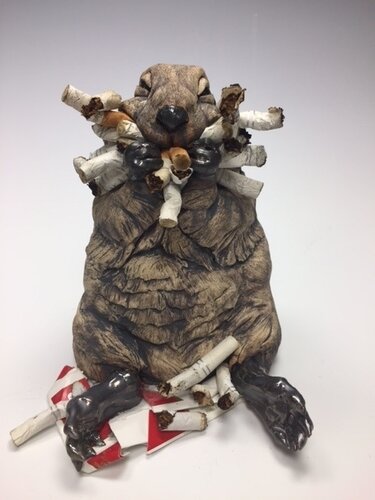
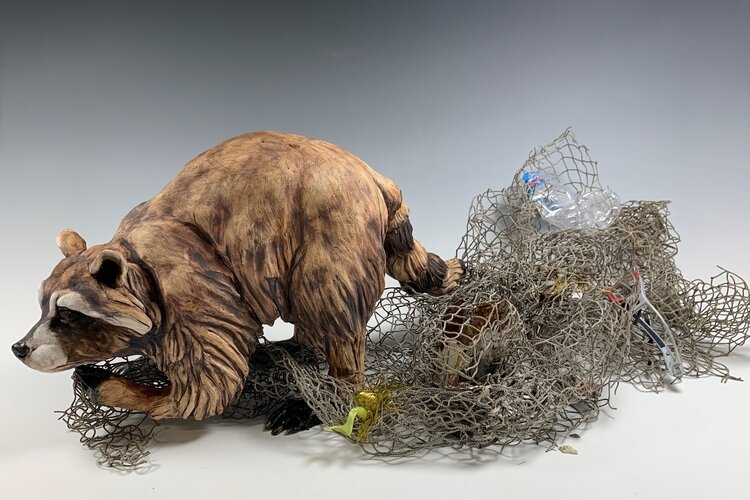
Deana Bada Maloney, The Nature We Create: How we are negativity influencing our natural world, show through visual adaptations
“First Nations woman, Krystal, sits adorned with a traditional emu feather headdress, by the rocky outcrops that lay besides the river at Uriarra on Ngunnawal country. As Aboriginal women we feel a strong connection to country, particularly to the waterways that run like bloodlines throughout Australia. Protecting country and water sources from fracking and climate change is of the utmost importance.”
— Jessika Spencer
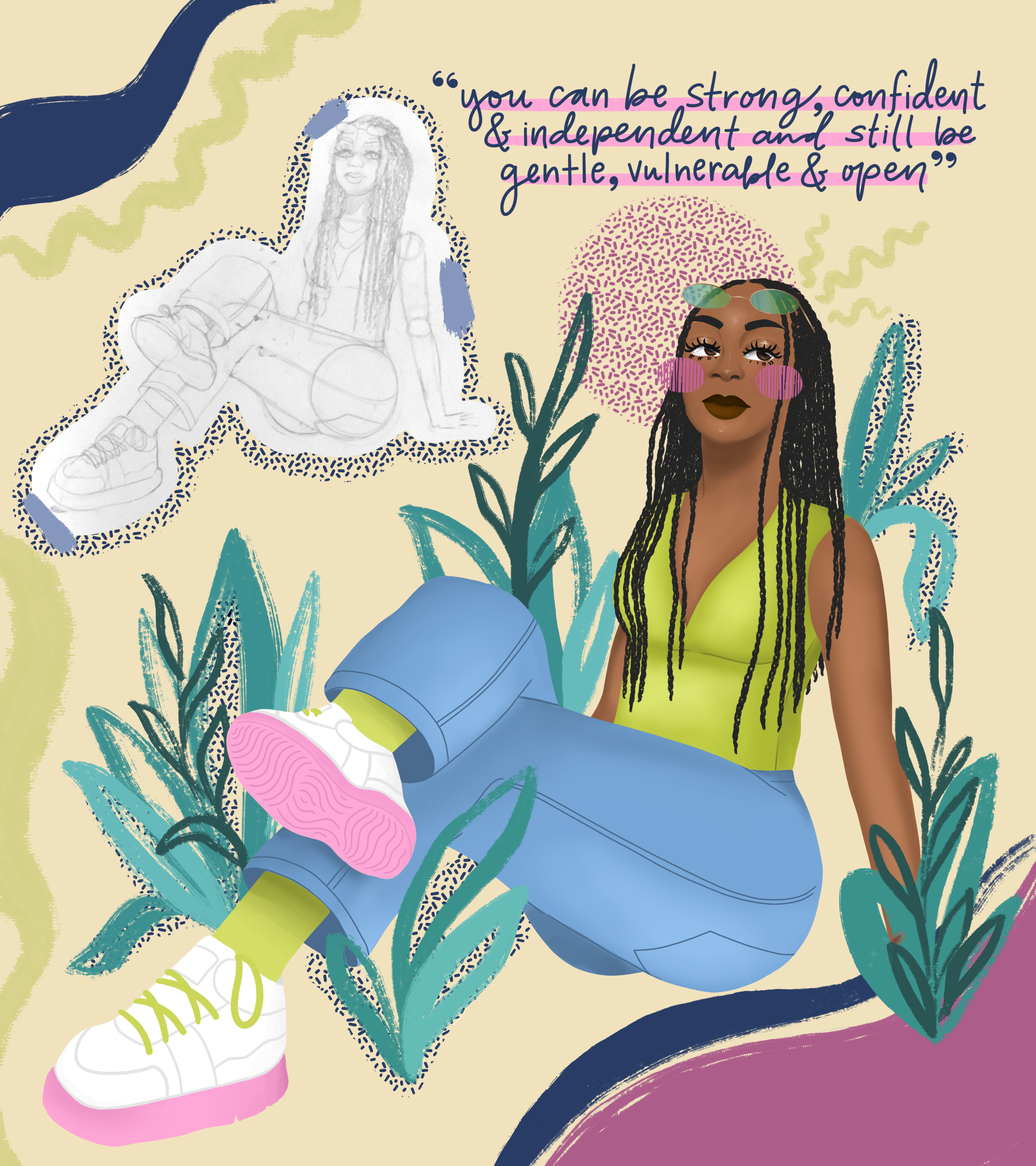
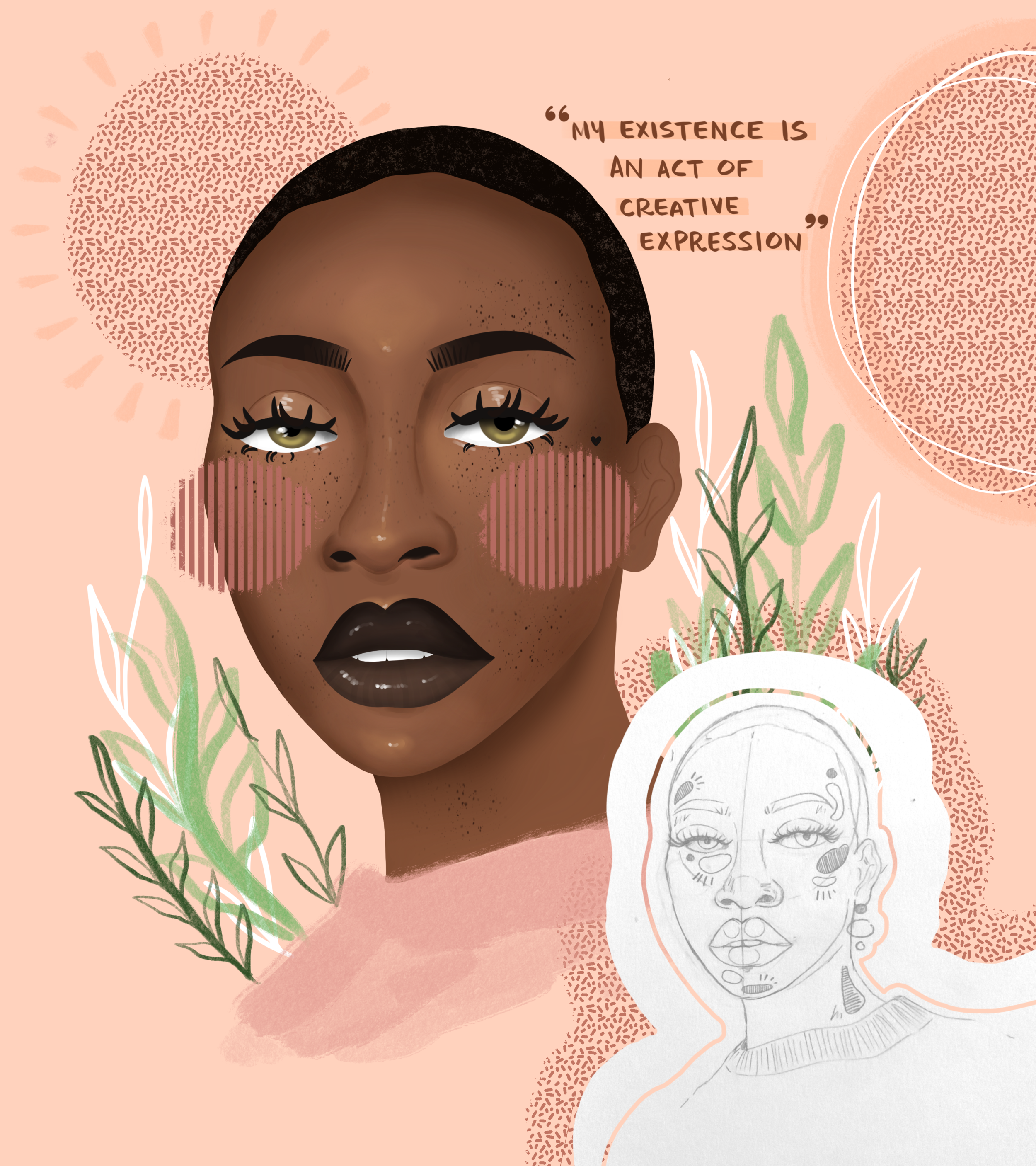
Uzo Ngwu is a Black & Blooming Microgrant semifinalist: “I’m a Nigerian-American visual artist and musician from Apple Valley, Minnesota. I’m currently a first-year student dual-enrolled at Harvard University and Berklee College of Music. My visual work consists of portrait style pieces, illustrations and graphic design and my goal as an artist is to use my artwork as a means to uplift, inspire and connect with others.”
“[This piece] is centered around embracing facial hair, especially the unibrow, a feature that often represents one’s culture and that is removed in the media because it is not deemed to be ‘feminine.’” —Paris Quetzal Sistilli, Mexican-American artist from Annapolis, MD
“‘Playgirl’ (1) depicts a hybridized composition that acts as a self-portrait of the artist and her own lowrider which sparked interest in painting other womxn lowrider. ‘The WIP (Work in Progress)’ depicts an abstracted version of the artists lowrider while it is being restored.” — Jacqueline Valenzuela, first-gen Mexican American painter
“The idea that came to mind is "Power Puff Girls...but make them Black". This shoot will be one of my favorites because even though we were up till 2am finishing it and we were extremely exhausted after, we spent the whole night dancing, laughing and hyping each other up. This shoot to me truly embodies sisterhood and girl power, It also helps me realize that I love what I do which is creating and producing art just like this.” —Cierra Bamisaye
“I want to guide women through the human experiences of love and happiness through visuals and spoken word. The journey can be painful, beautiful, and unexplained: ‘To understand one’s self, all your experiences, good and bad, help you reach your true potential and become the warrior you are destined to be.’” —Sasha Barnes
“The subway train is packed with people from every walk of life, whether it is a mother and her newborn, a young woman giving up her seat for the mother, a man falling asleep on the way home from work, or a student with his bookbag leaning heavily on the subway pole. If these people can coexist in the same train with tolerance for each other, then there is no reason why compassion should be a privilege instead of a right.” —Taylor Wang
“She rises above on the wings of Prayers.” — Tiffany Wolfe, artist and earring-maker who works primarily with dentalium.
“i’m screaming,” self-portrait from 100 portraits challenge, Amel Dockery (she/her), 19-year-old artist from the outskirts of Chicago
“Reimagining day to day portraits with with positive images and stories to match to help people deal with the cards they are dealt. Painting positive vibes on our canvas of life.” — Ija Charles
“My art shows empowered matriarchs, actively seeking change from the colonized world while also decolonizing themselves. It’s so important for us to acknowledge the wounds we have from the white systems in place and to work to heal them. We first heal ourselves before we can heal the world.”
—Moe Butterfly Hoffer (Onandowaga, Turtle Clan)
“The hands represent healing after a traumatic relationship and regaining control over what my hands can do. How they can keep loving, pleasuring, creating. The jacket is a visual representation of how I see my femmeness. The jacket is my second skin. It is how I navigate this world with confidence.” — Adriana Ortiz-Carmona (she/her), queer femme painter from New Mexico
“I used honey to apply the gold leaf to Kaelin (@kaelinmariee)… To me being sweet like honey means to accept the compliments of others, allow yourself to love yourself, and be confident. When you don't love yourself it can be hard to accept compliments, it can be hard to be confident. But honey is made by a collective, honey is like the kind words from family members and friends that you need to adorn yourself with. Feel the love of others to love yourself.”
—Emmie Edmo (Fort Hall Idaho Reservation)
“This is my interpretation of Spider Woman. Her face is modeled off of a leader of my clan who I respect and look up to greatly. This drawing is my homage to the matriarchy and the powerful women who inspire me.” — Shea Hueston (Diné)
“This collection of photographs are from the rural village of Siding, Nepal. The school is run by strong female teachers, including the headmaster, where they support and educate the children. It was amazing to see how gratitude, connection and love transcend.” — Hyning Gan (she/her), from Malaysia and Singapore, currently based in Hong Kong
“Katschina” (1), “Mother” (2), “He plays with dolls” (3). Rya Hueston is a Diné (Navajo) and Hopi two-spirit artist from the Navajo Reservation in Arizona and First Mesa Pueblo. Her work comes from her exploration of cultural identity and gender, using multimedia works and sculptural installation to navigate the nuance of both being a displaced indigenous persons, and deconstructing the trauma of navigating the world as an AMAB trans person.
Combining elements of American folk and museum display, the pieces are meant to challenge the viewer to examine inherently gendered objects and craft, and their relationship to the materials salvaged from Rya's home on the Navajo Reservation and Natsisaan, the holy mountain. The objects are inherently domestic, but also deeply rooted to nature and the land, charging the pieces with the history of spaces navigated by two-spirit individuals in their tribal roles pre-colonialism. The product is intimate but allegorical portraits of the artist herself. They are made from materials and objects that hold a sacredness.
"He plays with dolls" 2020. Gottschalk blue roof dollhouse c.1900, 1880s tobacco box folk art table. Interior, rez soil, woven nest, eggs made from childhood tapes, mesa photograph c. 1900, axe head, juniper bundle from my grandmother's house.

